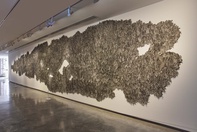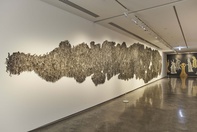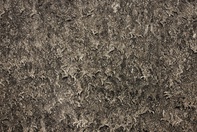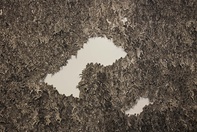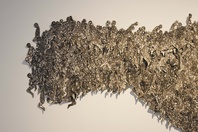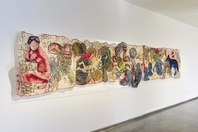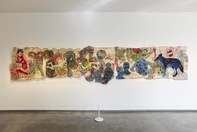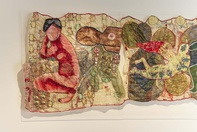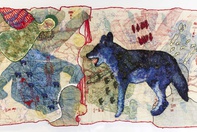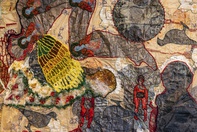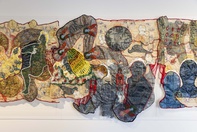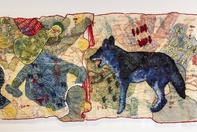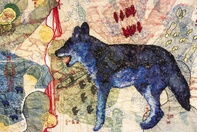Mehwish Iqbal
Dharug Country, Sydney
2021
Displayed 2021 at Museum of Contemporary Art Australia
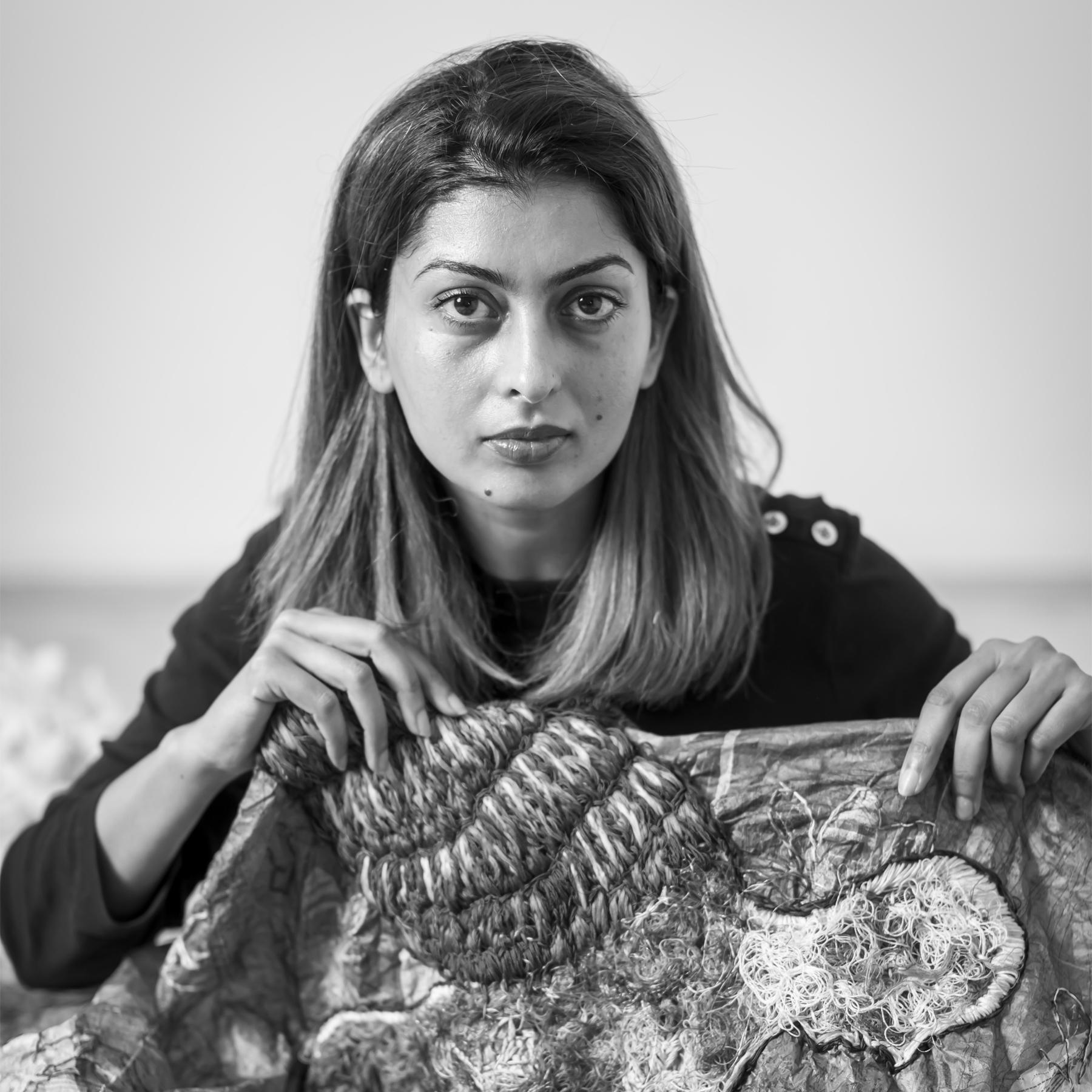
Mehwish Iqbal
Born 1981, Sangla Hill, Pakistan. Lives and works on Dharug Country, Sydney
Mehwish Iqbal’s multidisciplinary practice incorporates printmaking, painting, textiles, sculpture and installation. Her current research examines the geo-political scenarios giving rise to the influx of refugee and migrant diaspora, commodification of human agency, monopoly of power-play, hybrid identities and their complex reception in foreign environments. She actively engages with various communities to generate a universal discourse around the vulnerabilities and survival strategies of the human condition in present and historic contexts. Iqbal’s works have been shown in Australia, Istanbul, Pakistan, Hong Kong and New York, and she was a resident artist at Parramatta Artists’ Studios, Rydalmere, Sydney in 2019.
Photograph: Anna Kucera
Image courtesy and © the artist
Artist text
by Rachel Kent
Mehwish Iqbal’s intricate artworks trace the ebb and flow of humanity in motion across the globe. Trained as a painter in Lahore, Pakistan, Iqbal migrated to Dubai, then Australia to pursue her graduate studies in printmaking. Combining print media techniques with tempera painting, object-making and textiles, she has developed a distinctive visual vocabulary over the past decade that is characterised by its unconventional, fragile materiality.
Positioned on the gallery walls and floor, Iqbal’s works have a three-dimensional presence. The use of recyclable materials such as tissue paper, newsprint and dressmaker’s paper give them an air of impermanence despite their hand-painted, embellished surfaces. As a frequent traveller between Australia and Pakistan, Iqbal has spoken about the global disparity of wealth and poverty, and the value placed on human life in two very different landscapes. ‘Pakistan was going through a lot of turmoil around 2012, 2014,’ she recalls. ‘I was looking at the loss of life and how it’s perceived there, and how life is valued here. My materials became a symbolic response to the fragility and complexity of life.’
Artist residencies in Turkey and the United States, where Iqbal engaged with Syrian refugees and undocumented Mexican communities, have expanded her focus on narratives of migration and diaspora.
I researched into the aftermath of World War II, looking at how people were displaced, and the huge exodus of people locating themselves in different landscapes where their identities were altered. That is so relevant to what we are going through in current times, to the idea of restricted and forced movement of whole communities, as a consequence of cultural or religious identity.
Iqbal’s installation Grey Wall (2020–21) comprises 50,000 tiny human silhouettes, each made from hand-cut paper and painted with three layers of wash by the artist. Unfolding across a long gallery wall, the figures surge forward in drifts and clusters, layers of paper accumulating densely then dispersing outwards. The same yet different, they retain traces of individuality despite their massed presence.
Female agency, and the intertwined relationship between human and natural worlds, are also themes within Iqbal’s art. ‘I was raised by very strong women in a patriarchal system, and heavily influenced by my grandmother who played a central role in the Partition of Pakistan,’ she says. ‘Women and children were the most vulnerable during the time of Independence. Listening to her stories of survival, from a young age, strengthened my belief in the role of women in society.’
Iqbal was raised in a village in the Punjab region of Pakistan, before moving to Lahore. Surrounded by animal life, she developed an abiding interest in the natural world – something that has deepened in response to Australia’s diverse flora and fauna. ‘There is a sublime connection between the human and animal world, including insects and bees. Our ecosystem depends on them and although individual creatures may be considered insignificant, they are vital and contribute so much.’
Insects – bees, butterflies and moths – are plentiful in Iqbal’s multi-panel work Fragments of an Assembled Landscape (2020). Incorporating printmaking, watercolour, embroidery and silver leaf on dressmaker’s paper, it brings together animal and human kingdoms through a procession of human silhouettes, wolves and insect life. The embroidered figure of a pregnant woman symbolises the sustenance of life and land: a powerful force holding children, families and communities together. Conversely, the survival strategies of the animal kingdom – the alpha male, territorial borders and their policing against strangers – are amplified in the human world, with devastating consequences.
Through this and other works, Iqbal reminds us of our fragile place within the world, and the power of community and connection in an era of vast change.
Artist’s acknowledgements
Mehwish Iqbal is represented by HG Contemporary, New York and Nanda\Hobbs Gallery.
The artist would like to acknowledge refugees and migrant communities within Australia and internationally for inspiring the artist to create Grey Wall, and Ahsan Qureshi and Minnah Ahsan for their relentless support in making this project a reality.
